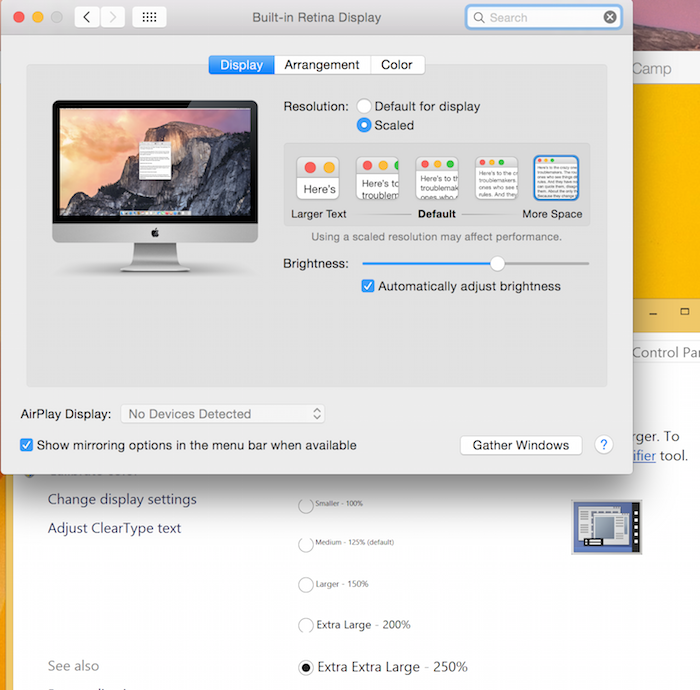Color Square Appears With Hololens Emulator Using Parallels 11 For Mac
- Using VMWare Fusion 8.1.1, I was able to set the OS type to Hyper-V, enable support within Windows, and successfully run the HoloLens Emulator inside the VM. Here are the full instructions.
- Aug 8, 2018 - The post Microsoft finishes turning File Explorer dark in latest Windows update appeared first on Digital Trends.

If you are using an administrator account during a software installation and you get prompted by the UAC, you should_____. After the Windows login screen appears b. Between the time POST ends and the Loading Windows screen begins. Google Glass.
This blog has moved; this piece now lives. Interested in doing all your HoloLens development while running macOS or Linux? Well, you can’t — not all of it, anyway. HoloLens applications have to be compiled to UWP applications by the.NET Native compiler, which only runs on Windows. And Unity only builds Windows Store apps on Windows.
Both Microsoft’s and Unity’s emulators only run on Windows. What you can do is write your Unity code locally on macOS or Linux, push it up to a remote build server, and build it there.
This might also be a desirable option if you have an underpowered Windows machine and want to speed up your builds. And, depending on your usage, you can have the cloud server free of cost for a year. Caveats If you don’t have a HoloLens, this setup might not be for you. Currently there is no way to run either Microsoft’s or Unity’s emulator in the cloud. So if you want to develop on Mac or Linux your best bet is to get yourself a HoloLens to test on. (Or, you could get a Windows machine just for build and emulation, in which case some of the information below will still be of use to you.) There’s also the issue of debugging. You can use the Visual Studio debugger on apps running in the emulator or on even on the device; there may be ways to do this from Xamarin Studio or the command line, but I haven’t tried to make that work.
Setting Up the Cloud Server For this article, we’re going to use Microsoft’s cloud service, though you could also use Amazon’s AWS or other cloud services. One advantage of Azure is that as a developer, you can sign up for and get $25 per month of complimentary Azure credit for your first year. Depending on the size of the VM you choose, you should be able to stay under that budget. Once you’ve signed up, go to the, find the Azure feature, and click the “Activate” link. This will set you up with your Azure account and give you a, as well as a screen where you can and see how much credit you’ve used for the month. The dashboard is where you create the virtual machine on which your build server will run. Here’s how:.
Color Square Appears With Hololens Emulator Using Parallels 11 For Mac Free
In the portal menu on the right, select + New Compute. Hit the “See All” link. Search for “Visual Studio Community 2017 RC on Windows Server 2016 (x64)”.
Click on it, then select the “Resource Manager” Deployment Model. For the Basics step:. Give your VM a name. Choose an SSD disk. Create a username and password. Use your “Developer Program Benefit” subscription. Csdx hsp56 sound card drivers for mac. Create a new “resource group” (unless you have one you already want to use) and give it a name.
For the Size step, choose your VM size. To fit within the developer benefit budget, you’ll probably need to use a DS2V2, depending on how much you use the VM. Ideally you’ll want more than 8GB of RAM, and 4 cores is as many as you can get with the developer license, so you might prefer an F4S or DS3V2 instead. Note that you won’t be using the VM 24×7, so the monthly prices are higher than what you’re going to pay, but you may have to limit your usage to fit inside the $25/month credit. For the Settings step, choose Managed disks (there’s no price difference, and it’s easier), and otherwise leave the defaults. Once you create the VM, you should see it in your dashboard, at least under “All Resources.” If not, click on “All Resources.” You can click on your VM to see it, and it will then appear under “All Resources.” Connecting to the Server Before you connect to the VM, you’ll need a remote desktop client. For macOS I suggest the, but you can also get the non-beta version on the app store.

For Linux, there are several RDP clients out there you can choose from. (I’m not using Linux, so I can’t make recommendations.) To connect to the server, double-click on your VM in the Azure dashboard. You’ll see a row of buttons at the top the leftmost of which is “Connect.” Clicking it will cause you to download a file with the.rdp extension.

On macOS, double-clicking the RDP file should open a connection to the remote server in the Microsoft remote desktop client. Note that if you don’t want to spend the extra money for a static IP address, the IP address will change every time you restart the virtual machine. Since you’ll be using various automated scripts, you’d need to change the IP address in each one every time. Instead, you can write a script to read the IP address from the RDP file and modify /etc/hosts with the new IP address. Then you can use the alias in /etc/hosts in your scripts without having to modify them. Here’s an example of such a script, which you can modify and run whenever you download a new RDP file; it uses the alias holodevelop for the remote server.